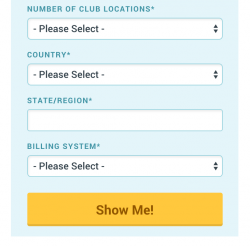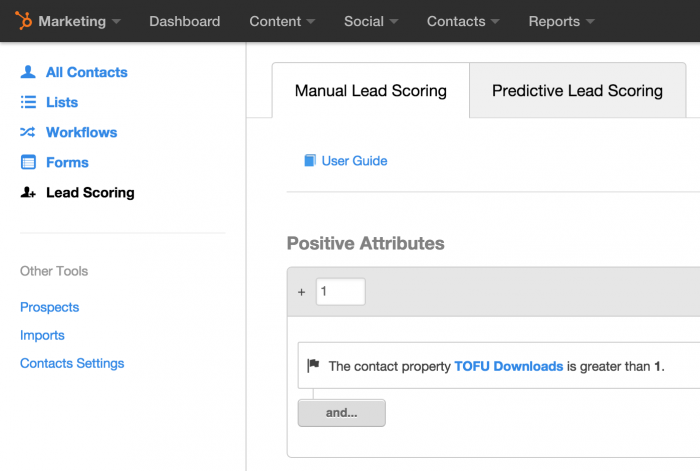 This is article #22 out of 50 in The Startup Marketing Playbook.
This is article #22 out of 50 in The Startup Marketing Playbook.
When you start building an inbound marketing and demand generation program, every lead feels like a huge success. When I started, I had every MQL emailed to me, and I would click through their source detail to see the exact journey they took from target > lead > MQL. That is awesome when you have just a few leads.
As you successfully build a pipeline of qualified leads, you’ll quickly find that (A) you don’t want an email alert for every one and (B) not every lead is created equally. A real lead pipeline mandates that you begin sorting and scoring your leads, only delivering the most qualified to your sales team. Lead scoring is simply identifying which leads are the best leads and delivering them to the sales team first.
You should start lead scoring when you:
- Generate more leads than the sales team can handle
- Get feedback about “bad leads” from the sales team
- Narrow down your target buyer persona
Let’s breakdown simply how you can start lead scoring from scratch:
1. Define criteria for qualification
Every business is different when it comes to the reasons why a lead is good. In some cases, it might be based on persona. To identify this criteria, you should consider:
- What leads move through the sales process quickly?
- What leads have BANT (budget, authority, needs, timeline)?
- What leads are likely to close at the highest price?
Since my team sells to gym operators, a gym owner or general manager requesting a demo is a much stronger lead than a personal trainer.
2. Use fields within the contact form
Among the greatest assets for determining the quality of a lead is the data that you collect in the demo request form. Include fields that a lead is willing to provide and that will help determine lead quality.
On my team, we look at the number of club locations (thus determining the size and monetary value of the deal) and billing system (we have strong partnerships with providers) as major qualification variables. We collect this data in our demo request form:

3. Use hidden data about the contact’s behavior
In addition to data you collect in form fields, you also have access to a myriad of data being tracked by your marketing automation system. This data is based on closed loop marketing, and all of the tracking that happens between a target entering your system as a lead and being nurtured into an MQL. This data includes:
- Website pages visited
- Emails opened or clicked
- Content downloaded
This data gives you a tremendous amount of context. If you determine that a lead that visits your pricing page at least twice, opens your weekly marketing email and downloads your Official Guide to Mobile Apps ebook has all the characteristics of a contact that is most likely to convert to customer, you want to score them high and send them right to sales.
4. Assign points to each variable you identified as scorable
Now that we’ve identified data points that you can score, the next step is assigning values to each of them. What makes a better lead: visiting your website or having a specific field value in the demo request form? To organize this, make a spreadsheet with all of your data points in Column A and a point value in Column B.
The number of points is irrelevant as long as it is proportional. In other words, if visiting the website is worth double what a specific field value in the demo request form is, website visit = 2 points and field value = 1 point. This can all be configured in your marketing automation system, like Hubspot:

5. Configure workflows to route leads based on score
Finally, you’ve now sorted your leads based on qualification and can easily make a list of your highest scored leads. You can use workflows in the marketing automation system for automatic routing of the best leads to sales. This might manifest itself in:
- Assigning the largest deals to more senior sales reps
- Sending automatic emails to less qualified leads to get more information
- Offering specific content to further nurture less qualified leads
Having enough leads that require scoring is a great problem to have for a B2B startup. Be sure to dedicate the time to assemble your lead scoring in a way that keeps your marketing team focused and your sales team busy selling.